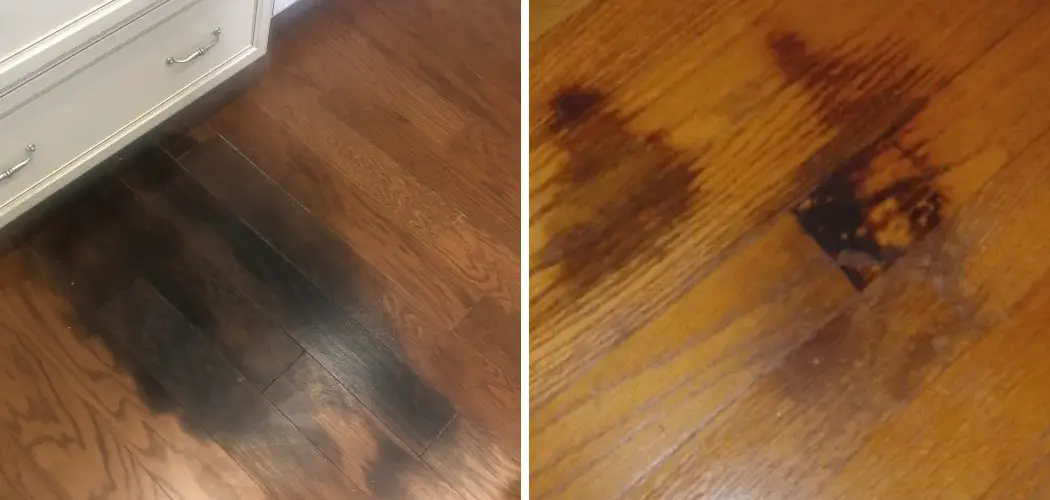It’s a common problem that homeowners face: How do you get rid of dark spots on hardwood floors? Dark spots are an unsightly yet all-too-common issue, especially in older homes. Typical culprits range from worn furniture legs to pet accidents and the buildup of dirt or debris. Whatever might be causing the dark spot, it’s important to address these stains as soon as possible in order to keep your wood flooring looking pristine. In this blog post, we’ll cover how to remove dark spots on hardwood floors, everything from identifying the type of stain to removing them successfully without causing any damage! Read on for some handy tips and tricks that will have your bare floors looking good as new in no time!
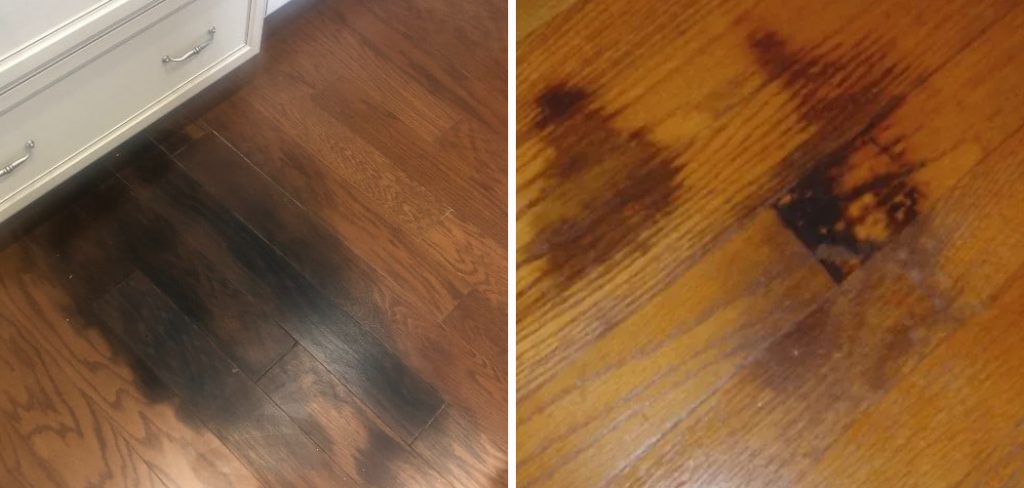
Does Hydrogen Peroxide Remove Stains on Hardwood Floors?
Hydrogen peroxide is a common household item used for many purposes, including stain removal. However, it’s best to use caution when using hydrogen peroxide on hardwood floors. Hydrogen peroxide reacts with certain materials and can leave behind discoloration or even damage the wood if not done properly.
If you decide to use hydrogen peroxide to remove a stain, it’s best to mix it with an equal amount of water and use a soft cloth or sponge to apply the solution directly onto the spot. Allow it to sit on the area for no more than 5 minutes before wiping it off with a damp cloth and then drying it with another clean cloth.
9 Methods How to Remove Dark Spots on Hardwood Floors
1. Vacuum Regularly
One of the best ways to prevent dark spots on hardwood floors is to vacuum regularly. Vacuuming not only removes dirt and dust, but it also helps to remove any grit that could scratch the floor. It’s important to use a soft brush attachment on your vacuum and avoid any beater-bar type brushes, which can damage the flooring. If you are using a wet-dry vacuum, make sure to keep the water level low and not too close to the flooring.
2. Sweep Often
In addition to vacuuming, sweeping is also important for preventing dark spots. Sweeping helps to remove any loose dirt or debris that could scratch the floor and cause discoloration. Remember to sweep up any small particles or dust bunnies in the corners and crevices of the room, as these can also scratch the wood over time. Use a soft-bristled broom or microfiber feather duster to avoid causing damage.
When in doubt, use a damp mop to sweep up any tough debris or dirt that your broom can’t reach. Be sure to check underneath furniture and behind door frames for dust.
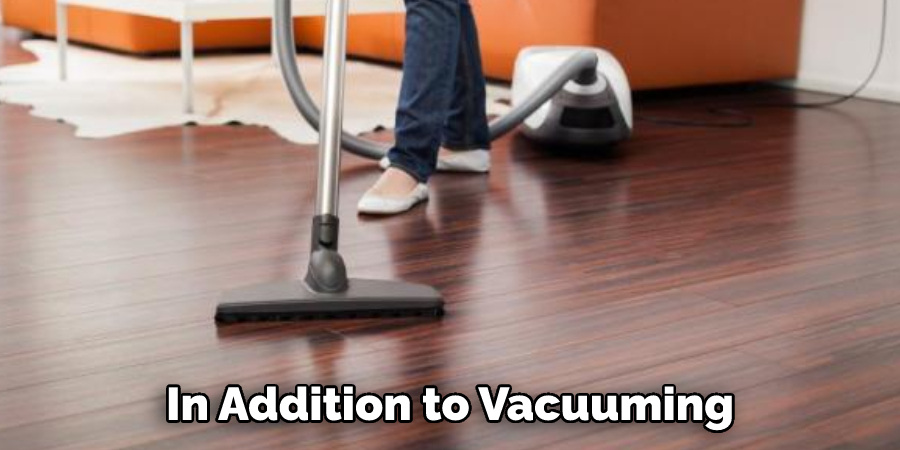
3. Use Doormats
Placing doormats at all entrances will help to reduce the amount of dirt and debris that gets tracked onto the floor. This will help to prevent dark spots from forming in the first place. It is also a good idea to clean away any dirt or debris from the doormats regularly so that they remain effective. If doormats are not an option, it’s a good idea to take off your shoes before entering the house. Make sure to clean your shoes before you put them back on. If necessary, use a damp cloth to wipe away any mud or dirt build-up.
4. Place Rugs in High-Traffic Areas
Rugs can also help to protect hardwood floors from dark spots. Rugs should be placed in high-traffic areas, such as entryways and hallways, to reduce the amount of wear and tear. Make sure to choose rugs that are designed for hardwood floors, as these will provide the most protection. Furthermore, use area rugs with non-slip backing to prevent them from slipping and damaging the floor.
Additionally, make sure to vacuum or sweep the rugs regularly to keep dirt, dust, and debris from being tracked into the home and damaging the floor. Lastly, when cleaning rugs, use a gentle cleaner specifically designed for hardwood floors.
5. Use Furniture Pads
Furniture pads are an important part of protecting hardwood floors from dark spots. Pads should be placed under all furniture legs to reduce scratching and scuffing. Additionally, adding felt pads to furniture legs can add a layer of protection against dirt and grime that can cause dark spots. Make sure furniture pads are replaced periodically to keep the floor looking its best. However, don’t forget to check furniture pads for dirt and debris, as these can also cause dark spots.
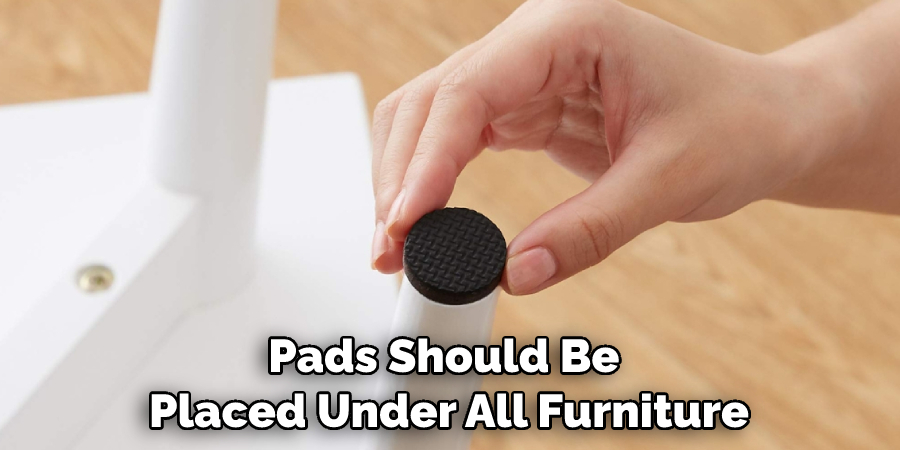
6. Wipe up Spills Immediately
Spills should be wiped up immediately to prevent dark spots from forming. Use a clean, dry cloth to absorb as much of the spill as possible. If the spill is oil-based, such as cooking oil or grease, you may need to use a mild soap and water solution to remove it completely. Always dry the wood thoroughly after any cleaning. While it’s important to clean up spills quickly, be sure that you’re using gentle cleaning methods so that you don’t damage the wood.
7. Protect from Sunlight
Sunlight can cause hardwood floors to fade over time, which can lead to dark spots forming. To protect your floors from sunlight, close blinds or curtains during the daytime hours when the sun is shining directly into your home. You may also want to consider placing rugs or furniture in front of windows to further protect your floors from fading.
Additionally, you can reposition furniture and décor periodically to prevent any one area of your floor from becoming too exposed to the sun. Finally, be sure to regularly dust your floors and furniture to remove any dirt or other debris that might be causing discoloration.
8. Avoid Using Harsh Cleaners
Harsh cleaners can damage hardwood floors and lead to dark spots forming. To clean your floors safely, use a mild soap and water solution or a commercially available hardwood floor cleaner. When using the soap and water solution, mop the floors with a damp microfiber cloth. When using a commercially available cleaner, follow the instructions on the label carefully and make sure to use the right amount of product.
Don’t forget to rinse your floors with clean water afterward, which will help reduce the risk of dark spots forming. You should also avoid using vinegar or other acidic solutions, as these can also cause damage and discoloration.
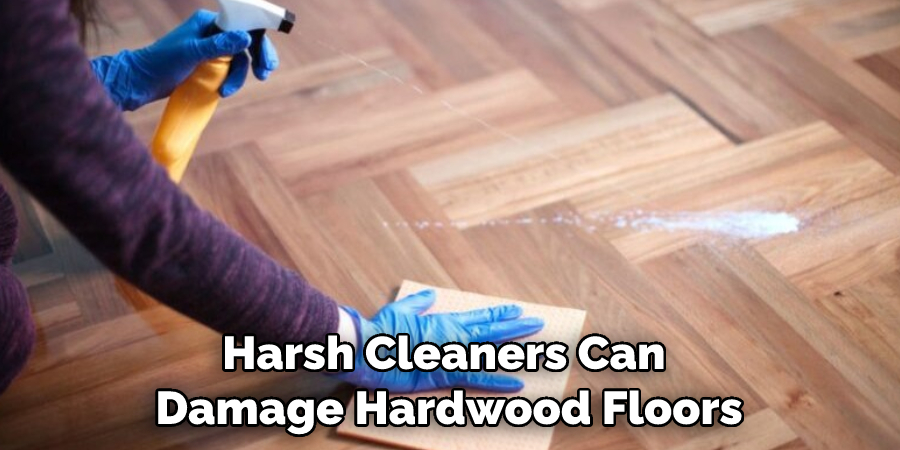
9. Refinish the Floors
If nothing else seems to be working, you may need to refinish your hardwood floors. This will help remove any dark spots and restore the original beauty of your hardwood floors. Refinishing is a delicate process, so it’s best to hire a professional flooring contractor who can get the job done right. This will ensure that your floors look like new and help protect them against dark spots in the future.
By following these tips, you can keep your hardwood floors looking beautiful for years to come. If you find yourself dealing with dark spots already, be sure to refer back to this blog post for help removing them! Good luck!
Things to Consider When Removing Dark Spots on Hardwood Floors
1. Identify the Cause of the Dark Spot –
The first step in removing dark spots from hardwood floors is to identify what caused them in the first place. The most common causes are water damage, pet urine spills from food and drink, or direct sunlight. Knowing what caused the dark spot will help you determine the best way to go about removing it.
2. Choose The Right Cleaning Method –
Once you know what caused the dark spot, you can choose the right method for removing it. Different methods work better for different causes of dark spots. For example, using a strong cleanser and sandpaper is more effective at removing water damage than pet urine stains. You should also take into consideration the type of finish your hardwood floors have in order to choose the appropriate cleaning solution.
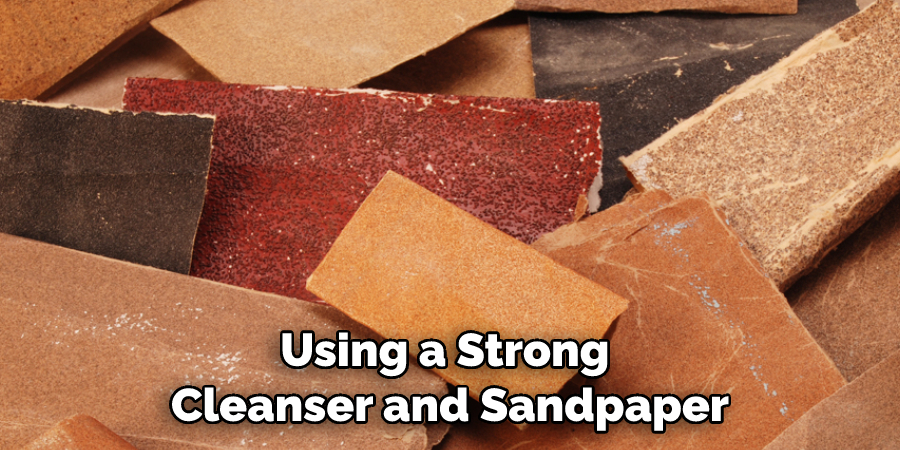
3. Use Appropriate Tools –
When cleaning hardwood floors, it’s important to use the right tools for the job. This includes soft rags or sponges when wiping down the floors and a vacuum or broom for picking up any debris. For more stubborn dark spots, you may need to use an electric sander or chemical stripper. Be sure to read the instructions carefully before using these tools in order to avoid causing further damage.
4. Clean Up After Yourself –
Once the dark spots are removed, it’s important to clean up the area thoroughly. This includes removing any dust or residue created by sanding, as well as wiping down the floor with a damp cloth to remove any excess cleaner. You should also apply a fresh coat of polish or wax after cleaning in order to restore shine and protect your hardwood floors from future damage.
Conclusion
Although you can use a number of different products to remove dark spots on hardwood floors, it is important that you take the time to find one that will not damage your floors. You should also make sure that you follow the directions carefully so that you do not end up with a bigger problem than you started with. With a little bit of time and effort, you should be able to get rid of those dark spots and have beautiful hardwood floors again. We hope this guide on how to remove dark spots on hardwood floors was helpful. Please share it with your friends on social media if you find it useful. And be sure to check back here soon for more informative guides like this one.
You Can Check It Out to Remove Murphy’s Oil Soap From Hardwood Floors

